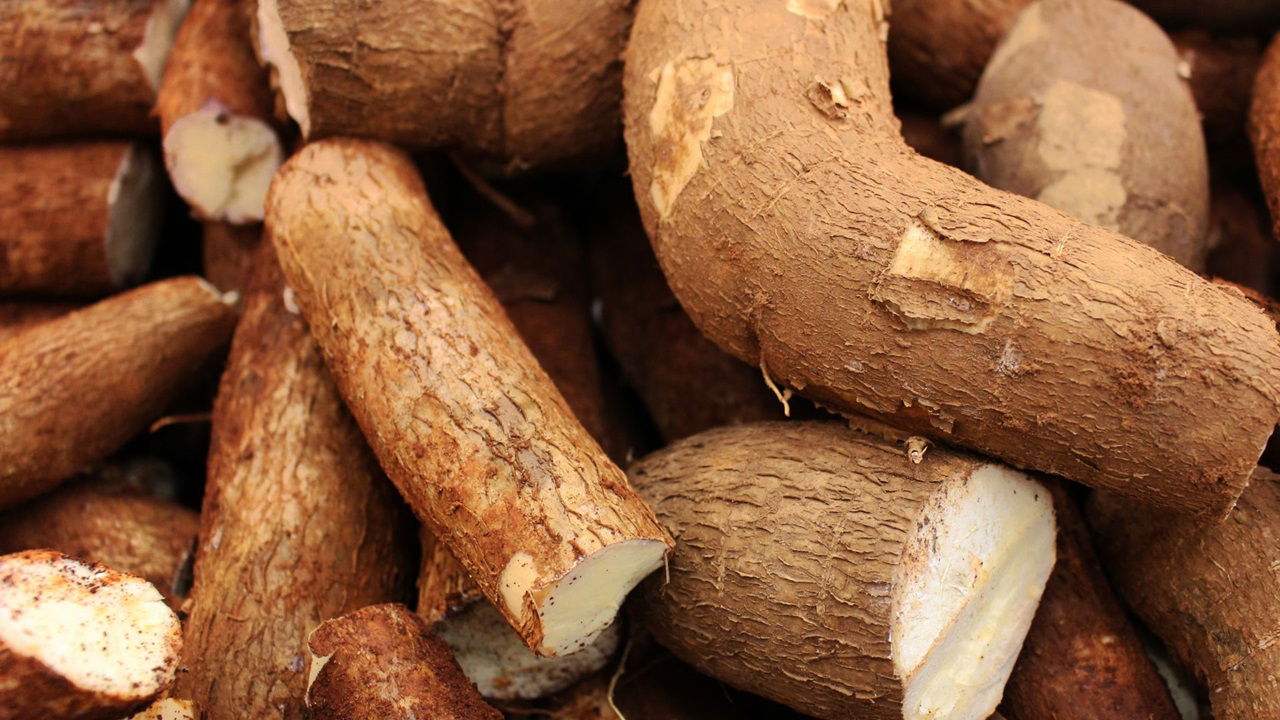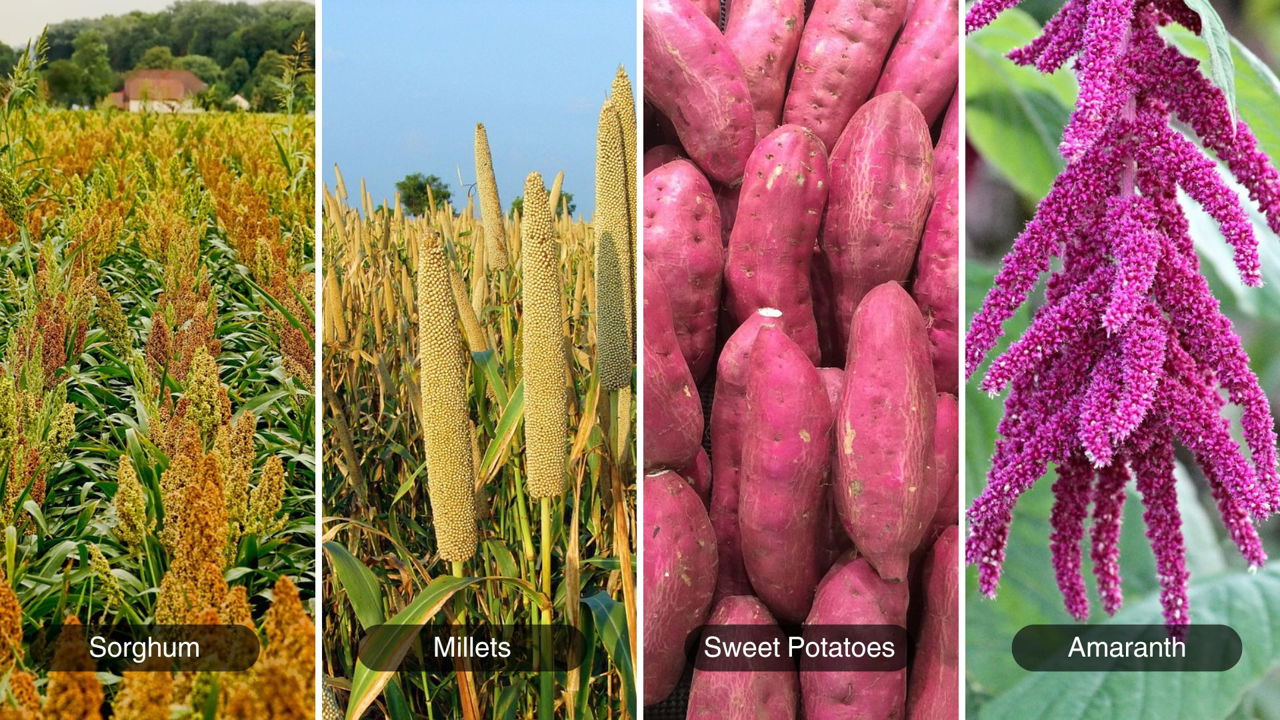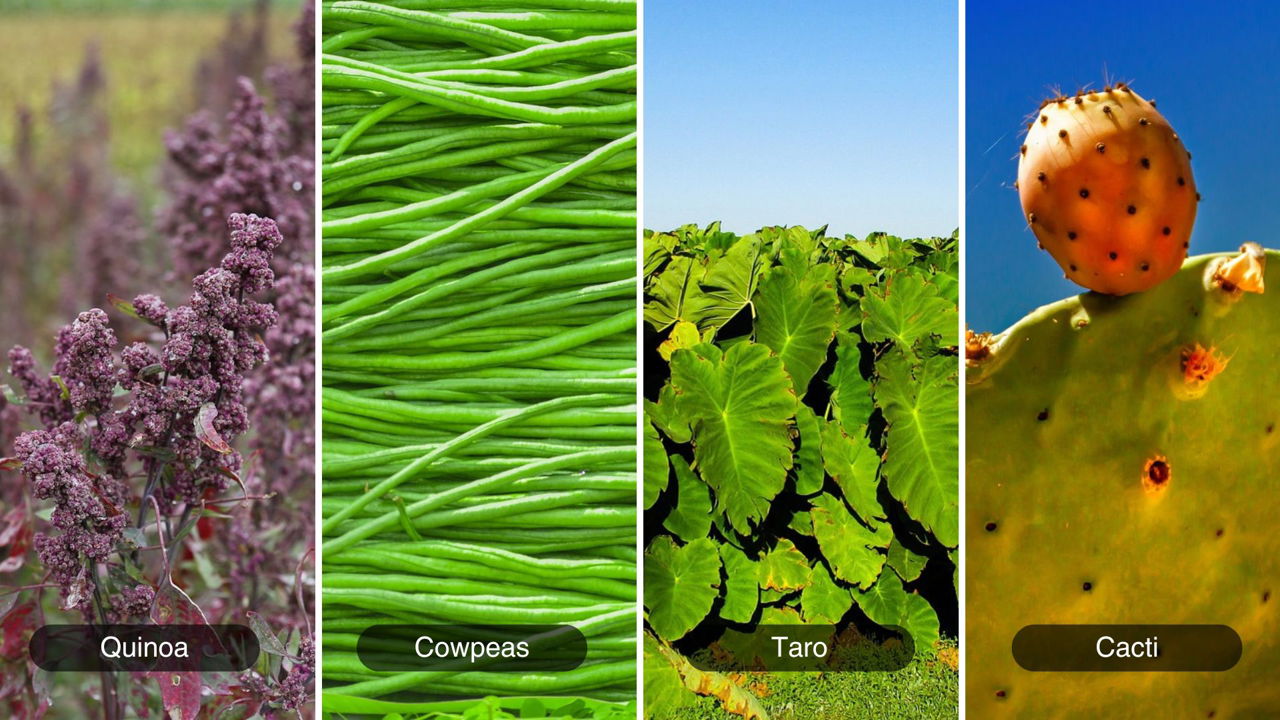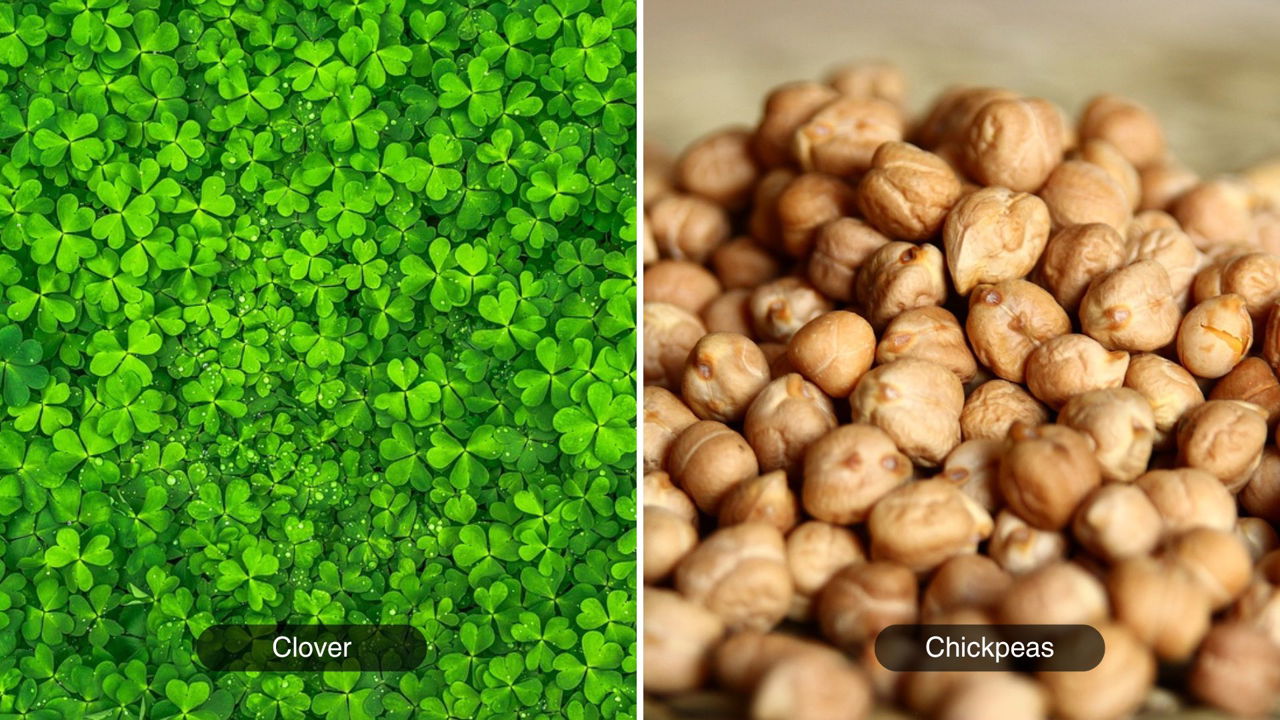
Extreme weather events like droughts, heat waves, and floods impact food security, especially for small-scale farmers. Climate-resilient crops withstand harsh conditions and maintain or boost yields in marginal environments where traditional crops may fail. With climate change causing more erratic weather, selecting these crops is key to food security and sustainable agriculture. Here are ten top climate-resilient crops known for their adaptability to diverse conditions:
1. Sorghum
Sorghum, originating in Africa, is valued for its drought resistance and adaptability. Its deep roots allow it to thrive in arid regions and unreliable rainfall areas. Nutritionally, it's rich in protein, fiber, and minerals, and gluten-free, making it suitable for those with celiac disease. Sorghum is versatile, used in foods like bread and porridge, as well as animal feed and biofuel. It grows best in well-drained soils with good water retention and full sunlight but adapts to various soil types.
2. Millets
Millets are small-seeded grasses like pearl, finger, and proso millet, known for their resilience to extreme weather and poor soil. These water-efficient grains are rich in protein, fiber, and minerals, and their low glycemic index helps manage blood sugar. With a short growing season, millets allow for multiple harvests per year and thrive in well-drained, sandy loams with minimal irrigation.
3. Sweet Potatoes
Sweet potatoes are adaptable tuberous roots rich in vitamins A and C, fiber, and antioxidants, supporting immune health and digestion. They tolerate drought and grow well in various soils and climates. Versatile in cooking, they should be planted in well-drained, sandy soils in warm temperatures after the last frost, with regular watering for best results.
4. Amaranth
Amaranth is a nutritious plant with edible leaves and seeds, thriving in heat and drought. The seeds are a complete protein source, and the leaves are rich in vitamins and minerals. It grows well in poor soils, preferring well-drained soils and full sunlight. Amaranth can be direct-seeded or transplanted. Ensuring sufficient water during establishment is crucial.

5. Quinoa
Quinoa, a pseudo-grain from South America, adapts to high altitudes and varying temperatures. It's a superfood, high in protein, fiber, and essential minerals. Quinoa thrives in diverse conditions, including frost and drought to wet tropical regions. It prefers well-drained, sandy loams and full sun. Plant after the last frost with adequate spacing for growth.
6. Cowpeas
Cowpeas, or black-eyed peas, are drought-resistant legumes suited to hot, dry climates. They enrich soil fertility by fixing nitrogen and are nutrient-rich. Cowpeas prefer well-drained soils with ample sunlight and require minimal irrigation. They are typically direct-seeded. Excellent for sustainable farming in arid regions.
7. Taro
Taro thrives in both wet and dry conditions, making it ideal for waterlogged soils. It's rich in carbohydrates, fiber, and essential vitamins and minerals. Taro prefers moist, well-drained soils and warm climates. It requires regular watering to sustain growth. Often used in a variety of dishes, from soups to desserts.
8. Cacti/Cactus
Cacti are succulent plants renowned for their remarkable ability to endure in extremely dry conditions. Their adaptations for water conservation enable them to thrive in arid environments, making them highly resilient. One significant benefit of cacti is their ability to store water in their tissues, which allows them to survive extended periods of drought.
Additionally, certain cactus varieties, such as the prickly pear, produce edible fruits that are rich in vitamins, antioxidants, and dietary fiber, offering nutritional value. Cacti are also low maintenance, requiring minimal care and capable of growing in poor soil conditions. For successful cultivation, cacti need well-drained soil and ample sunlight. They are typically grown in pots or raised beds with good drainage to prevent waterlogging, ensuring their health and growth.

9. Clover
Clover improves soil health by fixing nitrogen and adapts to various conditions. It's used as forage, cover crop, and green manure. Clover is drought-tolerant and thrives in well-drained soils. Regular mowing maintains its effectiveness as a forage crop. It helps reduce reliance on synthetic fertilizers.
10. Chickpeas
Chickpeas, or garbanzo beans, thrive in dry climates and nutrient-poor soils. They're rich in protein, fiber, and essential nutrients, supporting digestive health and energy. Chickpeas improve soil fertility through nitrogen fixation. They prefer well-drained soils and full sunlight. Moderate watering is needed during the growing season.
Selecting climate-resilient crops is an essential strategy for adapting to the impacts of climate change. These crops offer a range of benefits, including enhanced water efficiency, nutrient richness, and soil improvement, making them valuable assets for sustainable agriculture.

By incorporating these resilient crops into farming practices, we can ensure a more secure and adaptable food system for the future.















